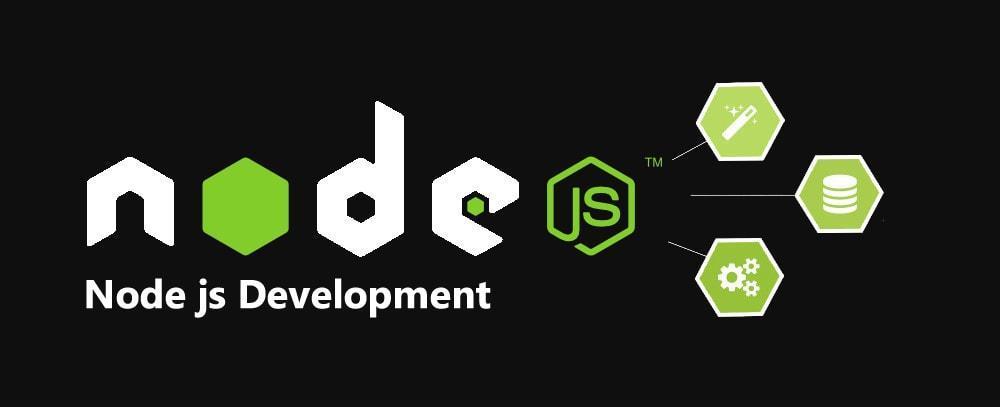الجزء الثاني من الـExpressJS Templating Using Pug
السلام عليكم و رحمة الله و بركاته ..
عودة الى الجزء الاول، وضحت كيفية ارسال بيانات من تطبيق الNode الى Pug وكيفية استقبال البيانات في الطرف الاخر و عرضها.
في هذا الدرس سنتعامل مع قاعدة البيانات ونرسل البيانات بطريقتين مختلفتين:
- سيتم ارسال جميع البيانات من احد الجداول الى الواجهة و سأعرض لكم طريقة التعامل مع هذا النوع من البيانات المرسله
- سننشأه items عباره عن json objects وبعدها نرسلهم.
الطريقة الأولى:
و بالحديث عن قواعد البيانات، سنستخدم قاعدة بيانات MySQL هذه المره ( الرجاء الرجوع للدرس الاول للحصول على كافة التجهيزات لهذا الدرس). / هنا , انشأ قاعدة بيانات بإسم company وجدول employees مثلا ومن ثم اضف هذه المدخلات.
-- phpMyAdmin SQL Dump
-- version 4.5.4.1deb2ubuntu2
-- http://www.phpmyadmin.net
--
-- Host: localhost
-- Generation Time: Jun 09, 2017 at 10:41 AM
-- Server version: 5.7.18-0ubuntu0.16.04.1
-- PHP Version: 7.1.5-1+deb.sury.org~xenial+2
SET SQL_MODE = "NO_AUTO_VALUE_ON_ZERO";
SET time_zone = "+00:00";
/*!40101 SET @OLD_CHARACTER_SET_CLIENT=@@CHARACTER_SET_CLIENT */;
/*!40101 SET @OLD_CHARACTER_SET_RESULTS=@@CHARACTER_SET_RESULTS */;
/*!40101 SET @OLD_COLLATION_CONNECTION=@@COLLATION_CONNECTION */;
/*!40101 SET NAMES utf8mb4 */;
--
-- Database: `company`
--
-- --------------------------------------------------------
--
-- Table structure for table `employees`
--
CREATE TABLE `employees` (
`ID` int(11) NOT NULL,
`name` text COLLATE utf8_unicode_ci NOT NULL,
`position` text COLLATE utf8_unicode_ci NOT NULL,
`office` text COLLATE utf8_unicode_ci NOT NULL,
`age` int(11) NOT NULL
) ENGINE=InnoDB DEFAULT CHARSET=utf8 COLLATE=utf8_unicode_ci;
--
-- Dumping data for table `employees`
--
INSERT INTO `employees` (`ID`, `name`, `position`, `office`, `age`) VALUES
(1, 'Airi Satou', 'Accountant', 'Tokyo', 23),
(2, 'Airi Satou', 'Accountant', 'Tokyo', 23),
(3, 'Donna Snider', 'Customer Support', 'New York', 27),
(4, 'Brenden Wagner', 'Software Engineer', 'San Francisco', 28),
(5, 'Caesar Vance', 'Pre-Sales Support', 'New York', 23),
(6, 'Cedric Kelly', 'Senior Javascript Developer', 'Edinburgh', 22),
(7, 'Dai Rios', 'Personnel Lead', 'Edinburgh', 35);
--
-- Indexes for dumped tables
--
--
-- Indexes for table `employees`
--
ALTER TABLE `employees`
ADD PRIMARY KEY (`ID`);
--
-- AUTO_INCREMENT for dumped tables
--
--
-- AUTO_INCREMENT for table `employees`
--
ALTER TABLE `employees`
MODIFY `ID` int(11) NOT NULL AUTO_INCREMENT, AUTO_INCREMENT=8;
/*!40101 SET CHARACTER_SET_CLIENT=@OLD_CHARACTER_SET_CLIENT */;
/*!40101 SET CHARACTER_SET_RESULTS=@OLD_CHARACTER_SET_RESULTS */;
/*!40101 SET COLLATION_CONNECTION=@OLD_COLLATION_CONNECTION */;
افتح ملف app.js و انشأ هذا الاوبجكت لعمل connection بين التطبيق وقاعدة البيانات
// connection
var connection = mysql.createConnection({
host : 'localhost',
user : '...',
password : '...',
database : 'db_name'
});
بعد ذلك، سنقوم بتعديل صفحة الـdetails في ملف app.js - المسار الذي يعرض صفحة الـdetails - لعمل Selection query
app.get('/details', function(req, res) {
connection.query('SELECT * From `employees`', function (error, results, fields) {
if (error) throw error;
console.log('The solution is: ', results);
res.render('details', {
title: 'Details - Pug ExpressJS NodeJS Tutorial',
employees: results
});
});
});
مخرجات اي query دائما ما يكون json object بالتالي متغير results هو عباره عن list of objects
[
{
"prop1":"value1",
"prop2":"value2"
},
{
"prop1":"value3",
"prop2":"value4"
}
]
نرجع إلى ملف details.pug ونقوم بتعديل block الجدول إلى التالي
table#example.display.nowrap.dataTable.dtr-inline.collapsed(cellspacing='0')
thead
tr(role='row')
th.sorting(tabindex='0', aria-controls='example', rowspan='1', colspan='1', aria-label='Name: activate to sort column ascending', style='width: 142px;') Name
th.sorting(tabindex='0', aria-controls='example', rowspan='1', colspan='1', aria-label='Position: activate to sort column ascending', style='width: 192px;') Position
th.sorting(tabindex='0', aria-controls='example', rowspan='1', colspan='1', aria-label='Office: activate to sort column ascending', style='width: 89px;') Office
th.dt-body-right.sorting_asc(tabindex='0', aria-controls='example', rowspan='1', colspan='1', aria-label='Age: activate to sort column descending', style='width: 37px;', aria-sort='ascending') Age
tfoot
tr
th(rowspan='1', colspan='1') Name
th(rowspan='1', colspan='1') Position
th(rowspan='1', colspan='1') Office
th.dt-body-right(rowspan='1', colspan='1') Age
tbody
for employee in employees
tr.odd(role='row')
td #{employee.name}
td #{employee.position}
td #{employee.office}
td.dt-body-right.sorting_1 #{employee.age}
نلاحظ وجود الـfor loop و طريقة استقبال وعرض المعلومات بسطر واحد فقط و ترجمته حرفيا ان لكل موظف في اوبجكت الموظفين ( الذي ارسلناه من الـNode ) قم بعمل صف في الجدول واضف مابعده
for employee in employees
tr.odd(role='row')
td #{employee.name}
td #{employee.position}
td #{employee.office}
td.dt-body-right.sorting_1 #{employee.age}
بهذا انتهينا من الجزء الأول للدرس وننتقل للجزء الثاني:
هذا الجزء من الدرس يتعلق بكيفية عمل items بشكل تخصيصي .. ان ماذا لو انك لا تريد ان تضم عمر الموظف في جدول العرض؟ سنقوم بالتالي في ملف app.js و details.pug - وكلشئ آخر يبقى كما هو:
//app.js
app.get('/details', function (req, res) {
connection.query('SELECT * From `employees`', function (error, results, fields) {
if (error) {
throw error;
} else {
console.log('The solution is: ', results);
var employees_json = [];
for (var index = 0; index < results.length; index++) {
var item = {
name: results[index].name,
position: results[index].position,
office: results[index].office
}
employees_json.push(item);
}
res.render('details', {
title: 'Details - Pug ExpressJS NodeJS Tutorial',
employees: employees_json
});
}
});
});
//details.pug
table#example.display.nowrap.dataTable.dtr-inline.collapsed(cellspacing='0')
thead
tr(role='row')
th.sorting(tabindex='0', aria-controls='example', rowspan='1', colspan='1', aria-label='Name: activate to sort column ascending', style='width: 142px;') Name
th.sorting(tabindex='0', aria-controls='example', rowspan='1', colspan='1', aria-label='Position: activate to sort column ascending', style='width: 192px;') Position
th.sorting(tabindex='0', aria-controls='example', rowspan='1', colspan='1', aria-label='Office: activate to sort column ascending', style='width: 89px;') Office
//th.dt-body-right.sorting_asc(tabindex='0', aria-controls='example', rowspan='1', colspan='1', aria-label='Age: activate to sort column descending', style='width: 37px;', aria-sort='ascending') Age
tfoot
tr
th(rowspan='1', colspan='1') Name
th(rowspan='1', colspan='1') Position
th(rowspan='1', colspan='1') Office
th.dt-body-right(rowspan='1', colspan='1') Age
tbody
for employee in employees
tr.odd(role='row')
td #{employee.name}
td #{employee.position}
td #{employee.office}
//td.dt-body-right.sorting_1 #{employee.age}
التعليقات (0)
لايوجد لديك حساب في عالم البرمجة؟
تحب تنضم لعالم البرمجة؟ وتنشئ عالمك الخاص، تنشر المقالات، الدورات، تشارك المبرمجين وتساعد الآخرين، اشترك الآن بخطوات يسيرة !





